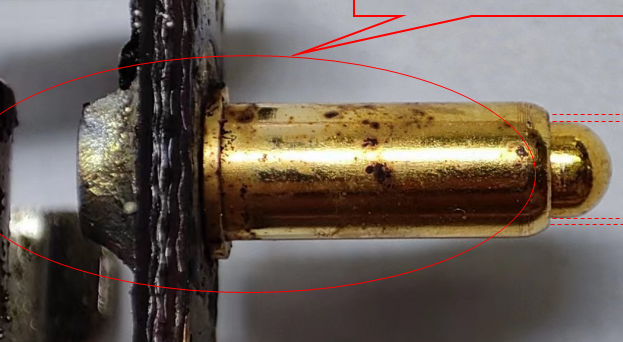Why the Pogo pin burning-out ?

Pogo pin is a device commonly used for electronic connection and testing, with good flexibility and stable contact. However, this equipment does have the problem that it is easy to burn out in actual use, and the reasons involve many aspects. The following will explain the reasons why Pogo pin is easy to burn out from the perspectives of design, materials, use environment, operation and maintenance.
1, the design principle and structural characteristics of Pogo pin have a direct impact on its durability. Pogo pins are usually composed of parts such as springs, needles and housing, and the fit accuracy and tolerance control between these parts are crucial to their performance. If the design is not proper or the manufacturing accuracy is insufficient, the spring may cause deformation when it is stressed, which will affect the contact performance and stability. In addition, the material and surface treatment of the needle also have an impact on durability. For example, some materials are prone to oxidation or corrosion in high frequency, high temperature or high humidity environments, resulting in poor contact or short circuit, resulting in burnout.
2, material selection is also critical to the durability of the Pogo pin. Spring and needle materials need to have good electrical conductivity, elasticity and corrosion resistance. If the material is not selected properly, such as the use of non-corrosion-resistant materials in a corrosive environment, or the use of materials with poor thermal stability in a high temperature environment, it may cause the performance of the Pogo pin to decline, or even burn out.
3, the use of the environment is also one of the important factors that lead to Pogo pin easy to burn out. Pogo pins are commonly used to test and connect electronic devices, which often work in complex and variable environments. For example, harsh environments such as high temperature, high humidity, and strong electromagnetic interference can negatively affect the performance of Pogo pins. In high temperature environment, the insulation performance of Pogo pin may decrease, resulting in short circuit or leakage; In the high humidity environment, the metal part may be corroded, affecting the contact performance; Strong electromagnetic interference may lead to unstable signal transmission and even damage the circuit.
Improper operation and maintenance is also one of the causes of Pogo pin burnout. When using Pogo pin, you need to follow certain operating procedures and precautions. For example, avoid excessive bending or stretching of springs, avoid disassembly or installation in a charged state, and regularly clean and maintain them. Improper operation or improper maintenance may result in damage or burnout of the Pogo pin. For example, over-bending or stretching a spring can cause it to lose its elasticity or break; Disassembly or installation in a live condition may cause electric shock or short circuit; Long-term uncleanliness may lead to the accumulation of dust and dirt, affecting the contact performance.
4. There are other potential factors to consider. For example, the instability of the supply voltage may cause the Pogo pin to burn out under excessive current; Poor heat dissipation inside the device may cause damage to the Pogo pin due to high temperature. And some special circumstances, such as electrostatic discharge, lightning strikes, etc., may also cause damage to the Pogo pin.
In summary, the reasons why Pogo pin is easy to burn out involve many aspects such as design, materials, use environment, operation and maintenance. In order to extend the service life of Pogo pin and reduce the risk of burnout, it is necessary to improve and optimize from these aspects. For example, optimizing design solutions to improve structural stability and contact performance; Select high-quality materials to improve corrosion resistance and electrical conductivity; Improving the use environment to reduce the impact of environmental factors; Enhance operational training and maintenance to improve efficiency and safety.
Through the implementation of the above measures, the risk of
Pogo pin burnout can be effectively reduced, and its application effect and reliability in electronic equipment testing and connection can be improved. At the same time, it is also necessary to pay attention to summing up experiences and lessons in practical applications, and make targeted improvements and optimizations according to specific situations to better meet actual needs and improve product performance.
